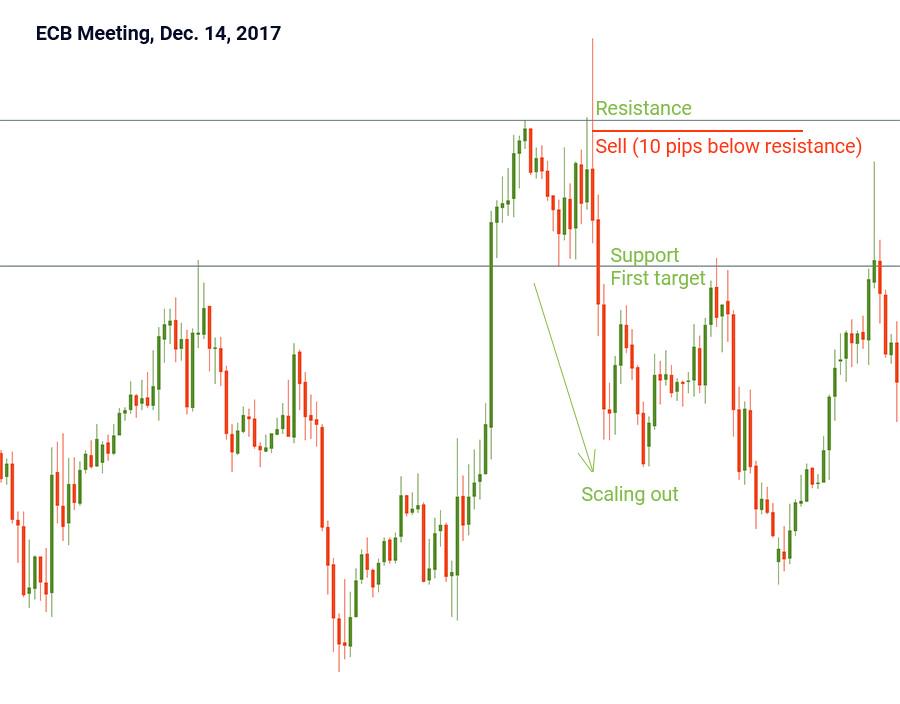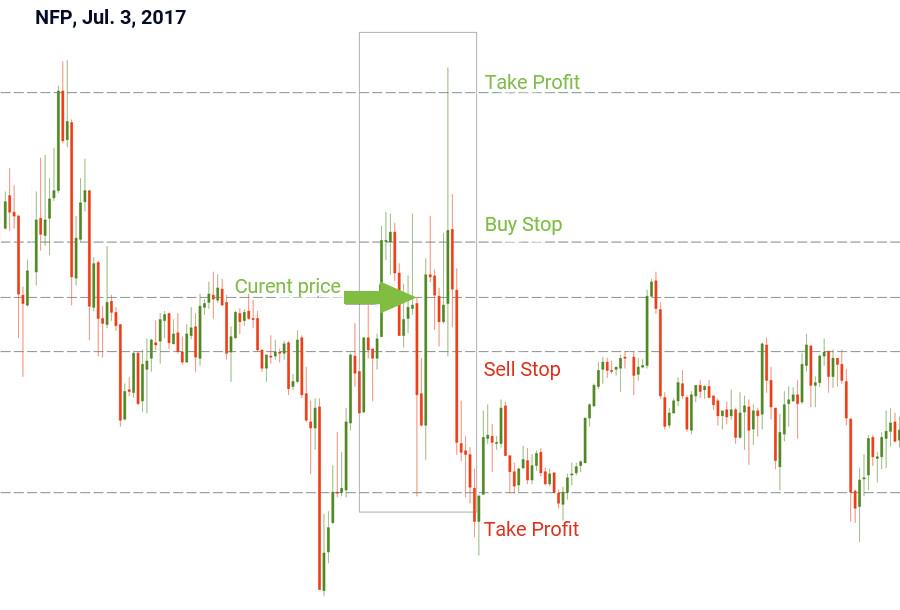Trading Accounts
Trading Conditions
Financials
CFD Trading instruments

Don’t waste your time – keep track of how NFP affects the US dollar!
The ASIC policy prohibits us from providing services to clients in your region. Are you already registered with FBS and want to continue working in your Personal area?
Personal areaInformation is not investment advice
The news represents great profit opportunities for Forex traders. By news, we mean various economic data releases. Every major economy regularly publishes statistics like GDP, inflation, unemployment rate, etc. If you trade Forex during the times of these releases, you have a chance to make a lot of money.
However, we have to warn you that potentially big profits always come hand in hand with bigger risks. Volatility spikes during these periods and prices may move in a disorderly fashion. If you don’t have a solid trading plan for a particular event, it’s better not to engage in any trades at all.
In this tutorial, we will get to the bottom of trading on news and economic releases. There are several strategies you may use.
The markets tend to price in the economic outlook future periods of time. As rule of thumb, economic growth means future prosperity which then equals to a strengthening of the country’s currency. Traders look for these upticks in economic growth (positive economic releases) as they usually offer opportunities to jump on an uptrend. In contrast, economic reports showing a slack in economic growth result in the weakening of the country’s currency. So, the future value of a currency is defined based on whether the actual data hits, misses or exceeds the forecast level.
An economic calendar is a key tool that helps traders not to miss important events. Its structure is simple. Economic indicators are listed in a table for a chosen period of time. Next to a particular indicator you see three data columns: previous reading, forecast, and actual reading. Before the release, the calendar contains only the previous reading and the forecast. The actual reading appears at the time of the release.
The forecast is a so-called “consensus” forecast or, in other words, the median of estimates from a number of experts, market analysts who have been polled prior to the publication of a particular release. If the actual data is better than the forecast, the currency appreciates. If the actual figures are worse than expected, the currency tends to depreciate. In most cases, “better” means higher than forecast and “worse” means lower than forecast. However, there are several exceptions to this rule, such as unemployment claims and unemployment rate: the lower these indicators are, the better for a currency in question. We should also note that a number that is close to the forecast level has usually negligible effect. The bigger the divergence between the actual and the forecast number, the bigger is the impact on the market.
Previous readings are not as important as forecast ones. Yet, sometimes previous readings get revised. These revisions tend to take place at the time when the actual reading is released. If the revision is significant, it will contribute to the effect the news has on the market.
And now let’s study three strategies that can be used for trading the news.
If you’re trading in a highly volatile market, your stops can be triggered before prices begin trending. This could be disastrous for your bet.
Before opening a position, identify support and resistance. These are your “cut points”: you can close the position at these levels if prices go against you. Authors of the strategy advice to define stop loss distance before the publication of the news report. In order to reduce the risks during the highly volatile period of news releases you can do the following thing: once you notice on an H1 chart that the price is 10 pips below the key support, put a BUY STOP entry order 10 pips above that key level. This way you will be able to benefit on the market’s reversal after some initial swing.
Same is with a short position: once you notice on an H1 chart that the price is 10 pips above the key resistance, put a SELL STOP entry order 10 pips below that key level.
The slingshot strategy seeks to scale out of winning positions as the trade moves in trader’s favor. If prices go in your favor, but you’re not sure how long such move will last, you may scale out your position (partially close it). If the prices keep going in the same direction, you can repeat the same procedure at further levels.

The idea is very straightforward: you should understand the market’s sentiment in relation to a particular currency and open position according to the direction of this sentiment. There are short-term and long-term market sentiments. Many traders prefer trading during short periods of time, as they don’t have sufficient amount of money to maintain open positions in the periods of high volatility.
Short-term sentiment is defined by economic news. If market participants expect the data to exceed the consensus forecast, they will take this into consideration. For example, if market participants wait for the Reserve Bank of Australia to raise its interest rate, the exchange rate of the AUD will be rising before the bank’s meeting (the probable rate hikes will be well priced in by the time the actual RBA meeting takes place). Once the RBA raised its interest rate, those market participants who had been ready for such turn of affairs would probably start selling AUD/USD and the pair would actually decline and not increase after the rate hike.
In order to be better off in such situation, you need to:
This strategy can be applied when you trade on the very important news or economic releases such as Non-Farm Employment Change (Non-Farm Payrolls – NFP). It’s one of the most influential statistic indicators published by the Bureau of Labor Statistics. It measures the number of jobs created in the nonfarm sector in the US in a month. NFP is usually released on the first Friday every month.
Nonfarm payrolls may send lots of shockwaves to the technical charts. That’s why many traders prefer to wait for the dust to settle (they don’t rush into the trade right after the announcement) and trade when they grasp a better idea of the effect the release has produced.
Your actions before the release: look at the range in which the pair is trading at the present moment, then in 5 minutes before the release place two pending orders (BUY STOP – 20 pips above the current price and SELL STOP – 20 pips below the current price).
Place |Take Profit orders 40 pips above and below the current price. You can place your Stop Loss at the current price in 5 minutes before the release or choose not to place it at all. In case of a favorable outcome, you can close the deal with profit (don’t forget to close another order). If you are lucky you can make money from both your bets (if prices change their direction and go higher/lower before falling/rising).
If the outcome is negative, the prices will move in the one of the direction, open the first order, but fail to reach your take profit. Then, prices will move in the opposite direction, open another order, but won’t reach the take profit level as well. If you have a stop, your losses will be limited. If you didn’t place any stops upon your entry, you can try to compensate your losses by opening new orders, although the risks in such case will increase.

On that day US NFP added 287K (the forecast was 175K). However, the unemployment rate increased more than expected (from 4.7% to 4.9%), that's why there was such volatile and contradictory reaction in EUR/USD.